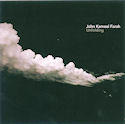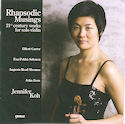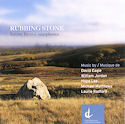Sibelius; Prokofiev - Violin Concertos
 Sibelius; Prokofiev - Violin Concertos
Sibelius; Prokofiev - Violin Concertos
Vilde Frang; WDR Symphony Orchestra, Cologne; Thomas Søndergård
EMI Classics 6 84413 2
I don’t know how to start... she’s too good to believe! Even though Vilde Frang is new on the recording scene, her debut CD has tremendous impact, driven by her talent and intelligence. This kind of supreme violin playing is rare.
Vilde Frang was born in Norway in 1986 and made her debut with orchestra at the age of ten. She concertizes throughout Scandinavia, Europe and the Balkan countries. She has shared the stage with such luminaries as Martha Argerich, Gidon Kremer, and Maxim Vengerov. She toured Europe and the USA with Anne-Sophie Mutter (her mentor) and the Camerata Salzburg. The recordings heard here were made when she was 22.
There are several recent recordings of the Sibelius, both new and historic, re-issues and discoveries, but this one stands out. Not since Ivry Gitlis’ legendary recording from the mid-fifties (VOX) have I been so taken.
From the opening bars the mood is set and the heartfelt scenario unfolds. Her playing is not only beautiful, it is original with genuine style and personality... attributes that have characterized the greatest music masters throughout a century of recordings. From the lyrical first movement to the energetic frisson of the finale I was mesmerized. That she feels a close relationship to this concerto is unmistakable.
For the Prokofiev concerto, too, she plays with great authority. After the eerie opening, she introduces a measure of frivolity and rhythmic vitality, always with taste and respect for the composer. Altogether, another magnificent performance.
A compelling case is also made for the rarely heard Humoresques.
Throughout the coherence and rapport between soloist, conductor and orchestra is captured on a dynamic recording with a real-life balance between soloist and orchestra. I am certain that we’ll be hearing much more from Vilde Frang.







